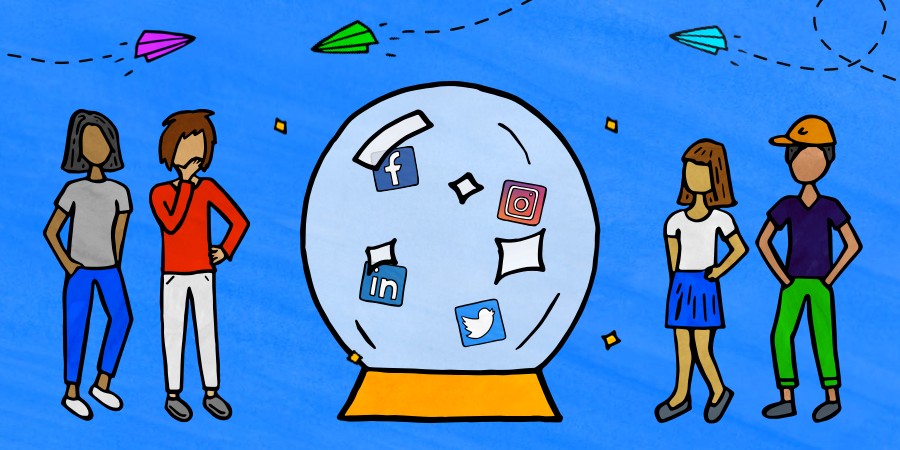The Future of Social Media Marketing
Social media started out with Myspace and Bebo (oh the nostalgia) before graduating to platforms such as Twitter and Facebook. Here we are now in 2019, ‘hashtagging’ and ‘storying’ like it’s nobody’s business.
What’s next for the social media industry?
1. A shift in focus: less on feeds, more on private messages
The feed is such an integral part of social media networks that it could never just vanish overnight. Regardless, people are using social media more and more as a way to get in touch with people and have instant message conversations.
To remove the feed entirely could be problematic though. The feed is the main source of incoming for many social media networks as most people will spend their dwelling time here. It’s also used as a key space for advertising. With visual formats such as Stories and Facebook Watch gaining speed, it’s likely that advertising will inhabit these forms in the absence of a feed. After all, IGTV is in the midst of discussions on adding advertisements to the content as we speak.
We have no doubt that the feed will start to play a smaller role in the growth of social media networks, but it’s here to stay for a long while yet.
2. Despite numerous industry worries, influencers aren’t going away
2018 / 2019 has been a tricky time for influencers with a lot of bad press and finger-pointing documentaries. However, not all influencers are deserving of the bad rep.
Influencers who are troublesome in the industry will become extinct over the next few years. Their followers will lose trust and begin to diminish, while brands will ‘wise-up’ to influencer red flags and learn how to find influencers who will work more effectively with their brand.
Although social media networks are still likely to be saturated with #ad and influencers galore, it’s not really the end of the world. If trustworthy and authentic influencers are all that reminds then the odd paid promotion will be much less problematic than it is today.
One trend we expect to see more of very soon is brand marketers educating themselves more about the influencer marketing supply chain. This will enable them to only work with influencers who promote their brand effectively and actually sell their product. Watch this space for further developments.
3. Brands will be making more of an effort to plan their content and be more consistent across channels
As social media continues to be an incredibly saturated space, the quality of content must also rise.
Brands that are smart will invite a social media specialist to take a look at what they’re currently doing, as well as give advice on where social media (and the internet in general) is headed. This will enable them to get a leg-up on future trends and plan ahead for the next five years.
Brands not able to identify what works for their business will lose customers to their competitors.
Plan, execute, analyse and repeat what works.
4. Small communities will trump big networks for most businesses (even more than they already do)
We all know that Facebook Groups and messaging apps have become so very popular over the last couple of years as a way to unite people with similar interests in thousands of niche topics. Whatever your tipple, there’s a group for it, filled with like-minded individuals posed for a heated discussion.
The general public is bored of seeing the same story over and over again. But having the context of a group changes things. A post about a new coffee shop only becomes interesting and relevant to you when it’s posted within a Facebook Group specific to your location.
Furthermore, the average person is usually more comfortable participating in conversations and sharing opinions within a smaller community, without fear of judgement from the entire world wide web. This ‘safe space’ atmosphere will continue to help groups become a hub of activity and engagement.
One thing that won’t change is that social media is the cheapest, fastest and the most scalable marketing channel available to most companies. That isn’t going away, period.
Welcome to the next five years of social media marketing.
Source: thedrum.com




